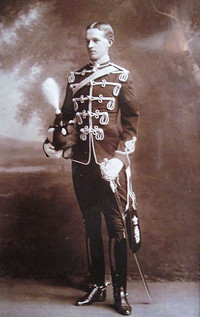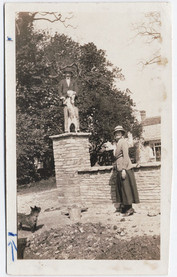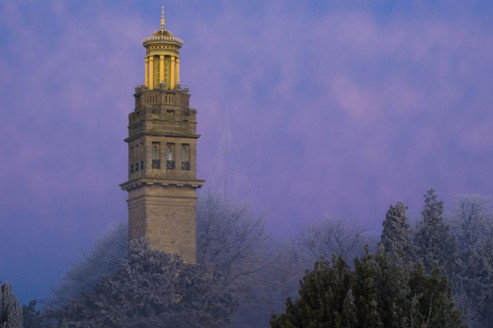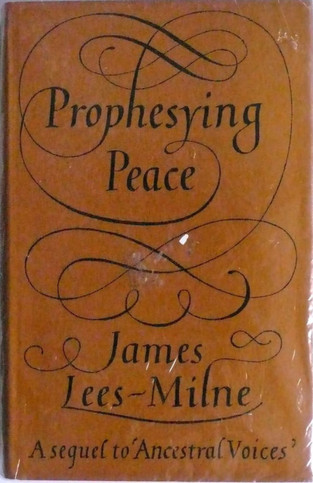James Lee-Milne - Muses & the Beau Monde
- Lilium
- Feb 17, 2021
- 5 min read
Updated: Feb 18, 2021

(George) James Henry Lees-Milne, born 6 August 1908, was an English writer and expert on country houses, who worked for the National Trust from 1936 to 1973. He was an architectural historian, novelist and biographer. His extensive diaries remain in print.

Lees-Milne was born on 6 August 1908 at Wickhamford Manor, Worcestershire. His biographer Michael Bloch observed that in Another Self, Lees-Milne "conveys the impression that he hailed from an old county family and that Wickhamford was their native seat. This was not quite the case. ... His father ... had bought Wickhamford, and moved from Lancashire to Worcestershire, only two years before Jim's birth." He was the second of three children and elder son of prosperous cotton manufacturer and farmer George Crompton Lees-Milne and his wife Helen Christina, a daughter of Henry Bailey. Lees-Milne's maternal grandfather was Sir Joseph Bailey, 1st Baronet, and his uncle, Joseph Bailey, the second baronet, was later created Baron Glanusk.
George Lees-Milne, formerly a lieutenant in the Cheshire Yeomanry, was chairman of the family business A. and A. Crompton & Co. Ltd, deriving his fortune mainly from a Lancashire cotton mill. Lees-Milne's parents were a "curiously contrasting couple"; his father, "shy but steady", was "conventional in outlook" with a "predilection for gambling and philandering", "obsessively punctual and constantly making plans", in contrast to his wife, "uninhibited with a streak of mental instability ... which ran in the Bailey family and which [Lees-Milne] always feared might lurk in himself" – she was "unconventional", "whimsical and impulsive"; where "she had a sense of humour, he had none". An exaggerated portrait of his parents, presenting them as "a pair of ludicrous eccentrics", appears in Another Life. Lees-Milne's sister Audrey, who was born in 1905, his younger brother Richard was born 1910. Audrey later married Matthew Arthur, 3rd Baron Glenarthur.
Lees-Milne attended Lockers Park School in Hertfordshire, Eton. He failed to shine at either work or games, and was regarded as dim and backward. Though shy and withdrawn, he formed passionate friendships - notably with Tom Mitford and Desmond Parsons. Through Tom he formed life long friendships with the members of the Mitford family.
He went on to Magdalen College, Oxford, from which he graduated with a third-class degree in history in 1931. From 1931 to 1935, he was private secretary to the 1st Baron Lloyd.
In 1936 Lees-Milne was appointed secretary of the Country Houses Committee of the National Trust. He held the position until 1950, apart from a period of military service from 1939 to 1941. During his tenure he was a regular contributor to the Trust's members' newsletter. He was instrumental in the first large-scale transfer of country houses from private ownership to the Trust. He resigned his full-time position in 1950, but continued his connection with the National Trust as a part-time architectural consultant and member of committees.

Lees-Milne was friends with many of the prominent British intellectual, Bright Young Things and social figures of his day, alongside Nancy and Diana Mitford was also Clementine Hudson (the Banbury aristocrat), Levi Schmeevi and Cyril Connolly.
Lees-Milne was visiting Diana in December 1936 when King Edward VIII abdicated. The purpose of his visit there was to examine the 17th-century house that she and her husband Sir Oswald Mosley were then renting. He recorded later how he and Diana (her husband was in London) had listened to the King's broadcast abdication speech with tears running down their faces. Lees-Milne was the lover of her brother Tom Mitford when they were at Eton College together, and was devastated when Tom was killed in action in Burma in 1945.
From 1947 Lees-Milne published several architectural works aimed primarily at the general reader. He was also a diarist – his witty, waspish and extensive diaries appeared in twelve volumes and were well received. Larry McMurtry commented that Lees-Milne, like Pepys and Boswell, was disarmingly open about his failings – indeed, would not have known how to go about concealing them. Nicholas Birns notes that Lees-Milne spoke:
"so candidly about himself, his life, and his love of art and architecture that his authorial relationship with the reader becomes a privileged one, not to be readily or casually communicated, not to be flaunted or brandished."
Lees-Milne also wrote other works, including several biographies – for instance of Harold Nicolson, The Bachelor Duke of Devonshire, and Lord Esher — and an autobiographical novel.

In 1949 he fell in love with the beautiful Alvilde Viscountess Chaplin (née Bridges), whom he had met during the war with her patroness Princess 'Winnie' de Polignac. He proposed to Alvilde by the end of the year. Alvilde was a prominent gardening and landscape expert. Both Lees-Milne and Alvilde were bisexual, and Alvilde is reputed to have had lesbian affairs with Vita Sackville-West, Winnaretta Singer and others. They married at a London registry office in November 1951, Harold and Vita acting as witnesses.
They moved to a little house in Roquebrune, France where Alvilde created an exquisite garden. Lee-Milnes more leisured life enabled him to write The Age of Inigo Jones (1953) and Roman Mornings (1956), which won him critical acclaim.
In 1961, Alvilde gave up her French domicile and bought a house in the Cotswolds, Alderley Grange, where she created a famous garden. Lee-Milnes loved this house - their 'Sissinghurst' - and it was undoubtedly a factor in keeping them together during several rocky years of marriage.
After 13 years of living at Alderley Grange, Wotton-under-Edge, Gloucestershire, and a brief period in Bath, Lees-Milne and Alvilde moved in 1974 to Essex House on the Badminton estate, also in Gloucestershire, while he worked most days in William Thomas Beckford's library at Lansdown Crescent, which he himself had loving restored. This is where he wrote his biography on Beckford, the first biography that he wrote. As a Trustee of the Bath Preservation Trust, he became a Founding Trustee of its Beckford's Tower Trust, established in 1977 to preserve and maintain the building and its collection for public benefit.
In 1979, aged seventy, he embarked on a platonic friendship with a young man of twenty-five; this briefly disturbed his marriage, but he and Alvilde drew close to each other as she nursed him through serious illnesses in 1984 and 1988.
In 1993 Lees-Milne declined a CBE in the New Year's Honours list, considering it inadequate recognition compared with the knighthood he felt was his due.
Alvilde Lees-Milne died in 1994. While living in Badminton he had entered into a feud with his landlord, the 10th Duke of Beaufort, whose fox hunting passion and autocratic manner appalled him. After Alvilde Lees-Milne's death, however, the Beauforts offered to allow him to live at Essex House rent free. Although touched, Lees-Milne valued his independence and possessed the income to pay rent and did not accept this offer, nor that of his friends, the Duke and Duchess of Devonshire, to live as a permanent guest at Chatsworth.
He remained lucid and active almost to the end, dying in his ninetieth year in hospital at Tetbury on 28 December 1997. His ashes and those of his wife, Alvilde, were scattered in the grounds of Essex House.

His extensive diaries remain in print, inspiring a series of three plays inspired by Lees-Milne's diaries – Sometimes into the Arms of God, The Unending Battle and What England Owes – were broadcast by the BBC in July 2013.
"On the same vein as Beverley Nichols, he writes as a close friend would, telling you the personal, witty stories that make it impossible not to admire him."
























































































































































